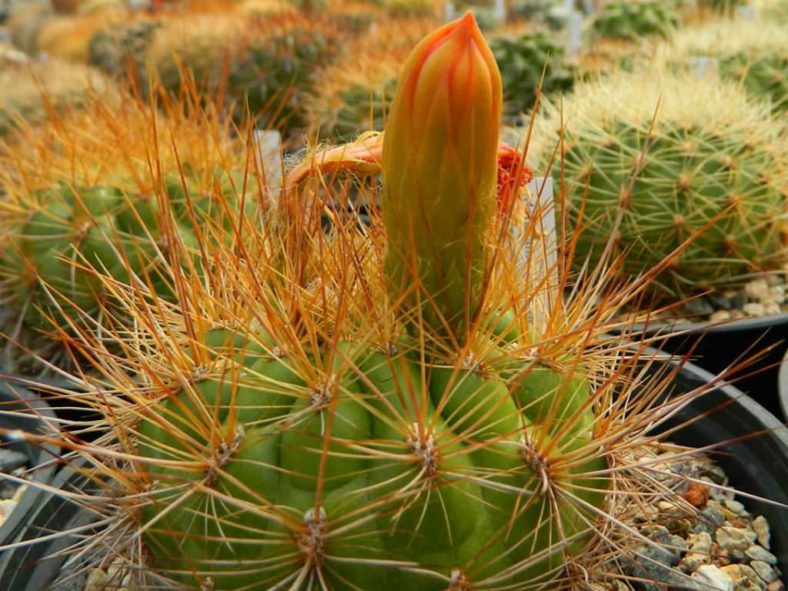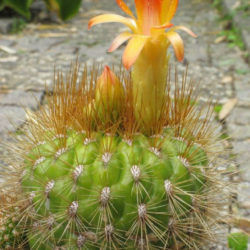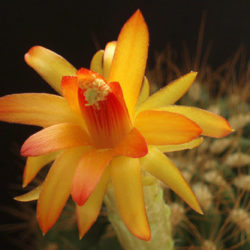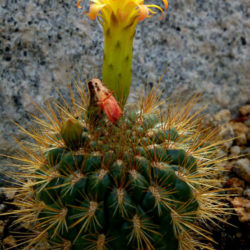Scientific Name
Matucana aurantiaca (Vaupel) Buxb.
Common Name(s)
Orange Matucana
Synonym(s)
Arequipa aurantiaca, Borzicactus aurantiacus, Echinocactus aurantiacus, Echinopsis ceroniana, Matucana aurantiaca subsp. aurantiaca, Submatucana aurantiaca
Scientific Classification
Family: Cactaceae
Subfamily: Cactoideae
Tribe: Trichocereeae
Genus: Matucana
Description
Matucana aurantiaca is a small cactus with spherical to cylindrical stems with about 16 distinctly tuberculate ribs lined with clusters of spines. The stems usually grow solitary or sometime produce few offsets from the base and can reach up to 14 inches (35 cm) tall and 6 inches (15 cm) in diameter. The yellowish-brown spines turn gray with age. Each areole bears about 9 central spines, measuring up to 2.8 inches (7 cm) long, and 16 to 20 radial spines, measuring 1.6 inches (4 cm) long.
The flowers are orange to red, funnel-shaped, reach up to 3.6 inches (9 cm) in length and 2.8 inches (7 cm) in diameter, and appear in summer. The fruits are spherical, green, and about 0.8 inches (2 cm) in diameter.
Origin
Matucana aurantiaca is native to Peru (Cajamarca and La Libertad).

Hardiness
USDA hardiness zone 9b to 11b: from 25 °F (−3.9 °C) to 50 °F (+10 °C).
How to Grow and Care
All species are sensitive to moisture. Therefore, watering should be limited to the growing season and should be made only when the substrate is completely dry. It must be suspended during the winter. Since these plants tend to lose their roots in cold and wet, they must be kept warm even in winter. A temperature not under 50 °F (10 °C) is suitable. Some species, for natural adaptation, can resist temperatures below 32 °F (0 °C).
The growth is fast if the plants are in the vegetative stage and optimal environmental conditions (a low moisture content with substantial temperature swing between day and night is appreciated). You can get blooms already after 2-3 years after birth.
Matucana must be grown in very porous and draining soil. It can be mainly composed of sand, lapilli, and gravel. To encourage the development of a dense network of spines, the quality of the nutrients in the substrate is very important. The soil must be rich in potassium and poor in nitrogen. Since the roots are very delicate and subject to rot, the soil should be kept as dry as possible: do not forget that these plants grow in steep and inaccessible places in their natural environment.
See more at How to Grow and Care for Matucana.
Subspecies
Links
- Back to genus Matucana
- Succupedia: Browse succulents by Scientific Name, Common Name, Genus, Family, USDA Hardiness Zone, Origin, or cacti by Genus
Photo Gallery
Click on a photo to see a larger version.


